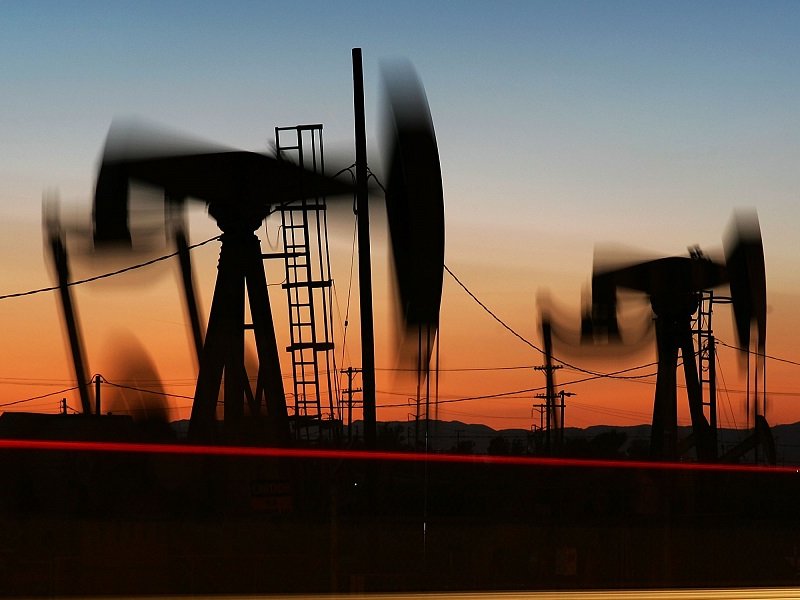 © David McNew/Getty Images
© David McNew/Getty Images2/2
- Iran supply fears will help drive oil “certainly” past $90 and likely above $100 in the coming months, Richard Mallinson, energy and geopolitics expert and co-founder of Energy Aspects told Business Insider.
- Venezuela “played a really important role in accelerating the shift in the market” as well since 2016
- “We’re nowhere near the end of this rally,” Mallinson told Business Insider.
- Major oil traders in late September forecasted oil at $100. reached $85 per barrel today.
The price of oil will “certainly” go above $90 and is likely to spike above $100 in the coming months, says one expert. And it’s not just looming Iran sanctions driving supply fears.
“We’re nowhere near the end of this rally,” Richard Mallinson, energy and geopolitics expert and co-founder of Energy Aspects told Business Insider.
“Certainly Iran is in the spotlight, and I think its the main driver of what we’ve seen over the last month or two, but Venezuela played a really important role in accelerating the shift in the market ever since – really 2016, when its production started to fall.”
Oil has been rallying as worries about Iran sanctions, which kick in on November 4, threaten global supply. Forecasts for a rise in Brent started mounting in late September, with oil-trading giants including Mercuria Energy Group predicting $100 oil by the end of the year while Trafigura Group said it expects it to pass that threshold in 2019. Oil traders speculating on future jumps in oil prices have also driven the price of options ‘calls’ higher. Oil today reached $85 a barrel and has been hovering at a four-year high.
Venezuela is a much overlooked, but smaller, catalyst, he said. US sanctions combined with the poor oil sector governance have seen that country’s production drop by over a million barrels per day, or 1% of global demand, which has left a hole in the global supply.
But Iran is proving a bigger problem, Mallison said. Oil exports have already been hit by the November 4 sanctions and production is declining steadily to below 2 million barrels per day in September, when they used to be an average of 2.7 million per day.
The whole ecosystem of business involved in the physical trade are making decisions whether they’re willing to continue being involved in Iran or not, and the majority are saying no because they’re afraid of being cut off from US markets, Mallison told BI.
Previously, low prices and concerns about slowing, long-term demand has spooked investors from long-term oil supply projects, he said, while sanctions on Venezuela and Iran which have tightened the market further.
“Many companies have told us that banks and insurers and shipping companies haven’t wanted to help them buy Iranian crude even before the sanctions formerly take effect,” Mallison said, because the US still haven’t made the rules of the sanctions clear, so companies don’t want to fall foul of them.
“No buyers want to be in a situation where they have an Iranian cargo still on the water sailing towards them when those sanctions come in,” he added.
“It was clear this was going to happen but it’s uncomfortable for the US because they still want to pursue this tough line against Iran. They don’t want domestic gasoline prices and fuel prices going up too high over the midterms and that’s why you’re seeing Trump leaning on Saudi Arabia, on OPEC, launching these tweets… because they’re trying to find a way to contain oil price increases without diluting the policy against Iran,” he added.
For the short term, Saudi Arabia is going to struggle to meet the gap in demand that has been left, and in the coming months it is likely to raise production to a near record 11 million barrels per day, he said.
“That will offset some of the loss from Iran,” Mallison said. “But it’s not a tap that can be opened overnight and that’s why we see the tightest point for the market right now in the fourth quarter.”
Fusion Media or anyone involved with Fusion Media will not accept any liability for loss or damage as a result of reliance on the information including data, quotes, charts and buy/sell signals contained within this website. Please be fully informed regarding the risks and costs associated with trading the financial markets, it is one of the riskiest investment forms possible.
Source: Investing.com




























